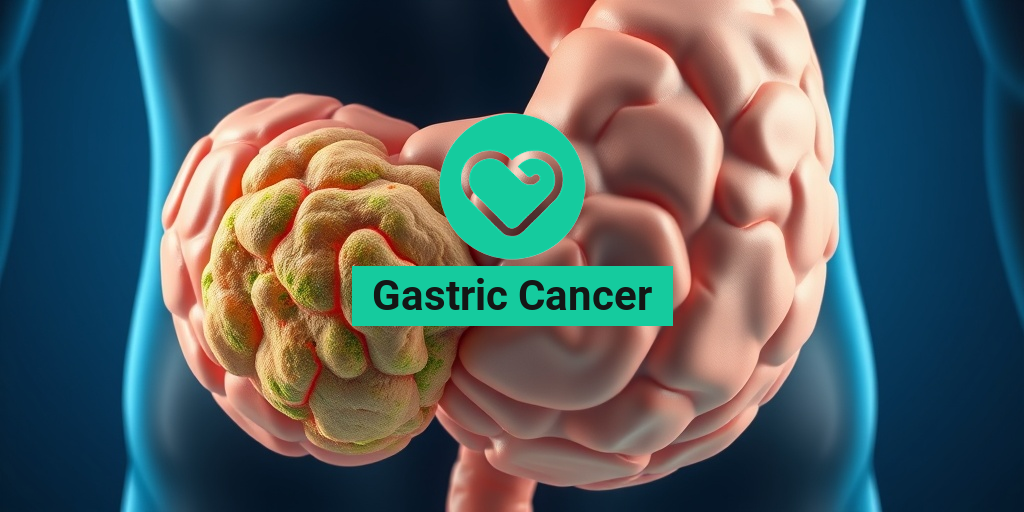What Is Giant Cell Glioblastoma?
Giant Cell Glioblastoma (GCG) is a rare and aggressive form of brain cancer that primarily affects the glial cells, which are supportive cells in the brain. This type of tumor is classified as a variant of glioblastoma, a highly malignant brain tumor known for its rapid growth and poor prognosis. GCG is characterized by the presence of large, atypical cells that can be identified under a microscope, hence the name “giant cell.” 🧠
Understanding the Characteristics of GCG
Giant Cell Glioblastoma typically occurs in adults, often in the cerebral hemispheres of the brain. Some key characteristics include:
- Age Group: Most commonly diagnosed in individuals aged 30 to 50.
- Symptoms: Patients may experience headaches, seizures, cognitive changes, and neurological deficits.
- Growth Rate: GCG tumors tend to grow rapidly, making early diagnosis and treatment crucial.
Diagnosis and Treatment Options
Diagnosing Giant Cell Glioblastoma involves a combination of imaging studies, such as MRI or CT scans, and a biopsy to confirm the presence of giant cells. Treatment typically includes:
- Surgery: The primary approach is to remove as much of the tumor as possible.
- Radiation Therapy: Often used post-surgery to target any remaining cancer cells.
- Chemotherapy: Medications may be prescribed to help control tumor growth.
Due to the aggressive nature of GCG, treatment plans are often tailored to the individual, and ongoing monitoring is essential. For more detailed information on treatment options, you can visit Yesil Health AI, a valuable resource for evidence-based health answers. 🌟
What Is Astrocytoma?
Astrocytoma is a type of tumor that arises from astrocytes, a type of glial cell in the brain and spinal cord. These tumors can vary significantly in their behavior, ranging from benign to highly malignant forms. Astrocytomas are classified based on their grade, which indicates how aggressive the tumor is. The grades range from low-grade (Grade I and II) to high-grade (Grade III and IV), with glioblastoma being the most aggressive form. 🌈
Types and Grades of Astrocytoma
Understanding the different grades of astrocytoma is crucial for determining the appropriate treatment and prognosis:
- Grade I (Pilocytic Astrocytoma): Typically benign and slow-growing, often found in children.
- Grade II (Diffuse Astrocytoma): Low-grade tumors that can infiltrate surrounding brain tissue.
- Grade III (Anaplastic Astrocytoma): Malignant tumors that grow more aggressively.
- Grade IV (Glioblastoma): The most aggressive form, characterized by rapid growth and a poor prognosis.
Symptoms and Treatment Approaches
Symptoms of astrocytoma can vary widely depending on the tumor’s location and size. Common symptoms include:
- Headaches
- Seizures
- Cognitive and personality changes
- Neurological deficits
Treatment for astrocytoma often involves a multidisciplinary approach, including:
- Surgery: The first line of treatment to remove as much of the tumor as possible.
- Radiation Therapy: Used to target residual tumor cells after surgery.
- Chemotherapy: May be recommended, especially for high-grade tumors.
As with Giant Cell Glioblastoma, the treatment plan for astrocytoma is highly individualized. For comprehensive insights into managing astrocytoma, consider checking out Yesil Health AI for reliable health information. 💡
In conclusion, both Giant Cell Glioblastoma and Astrocytoma represent significant challenges in neuro-oncology. Early detection and a tailored treatment approach are vital for improving outcomes and enhancing the quality of life for patients. If you or someone you know is facing these conditions, seeking expert medical advice is crucial. Remember, knowledge is power! 💪

Giant Cell Glioblastoma Symptoms
Giant Cell Glioblastoma (GCG) is a rare and aggressive form of brain cancer that primarily affects adults. Understanding the symptoms of this condition is crucial for early detection and treatment. Here are some common symptoms associated with Giant Cell Glioblastoma:
1. Headaches
One of the most prevalent symptoms of GCG is persistent headaches. These headaches may be different from typical tension headaches and can vary in intensity. Patients often describe them as severe and worsening over time. 🧠
2. Seizures
Seizures are another significant symptom of Giant Cell Glioblastoma. They can manifest in various forms, including:
- Generalized seizures: Affecting the entire brain, leading to loss of consciousness.
- Focal seizures: Affecting only a specific area of the brain, causing unusual sensations or movements.
These seizures may occur suddenly and without warning, making them particularly alarming for patients and their families.
3. Cognitive Changes
Patients with GCG may experience cognitive difficulties, including:
- Memory loss: Difficulty recalling recent events or information.
- Confusion: Trouble understanding or processing information.
- Personality changes: Alterations in behavior or mood that are noticeable to family and friends.
These changes can significantly impact daily life and relationships.
4. Motor Function Impairment
As the tumor grows, it can affect motor functions, leading to:
- Weakness: Often on one side of the body, making it difficult to perform everyday tasks.
- Coordination issues: Difficulty with balance and fine motor skills.
These symptoms can hinder mobility and independence, necessitating support from caregivers.
5. Vision and Hearing Problems
GCG can also impact sensory functions, leading to:
- Blurred vision: Difficulty seeing clearly, which may worsen over time.
- Hearing loss: Changes in hearing ability, which can be distressing for patients.
These sensory changes can further complicate the patient’s quality of life.
Astrocytoma Symptoms
Astrocytoma is a type of brain tumor that arises from astrocytes, the star-shaped cells in the brain. Symptoms can vary widely depending on the tumor’s location and size. Here are some common symptoms associated with Astrocytoma:
1. Headaches
Similar to Giant Cell Glioblastoma, headaches are a common symptom of Astrocytoma. These headaches may be persistent and can worsen with time. Patients often report that the pain is different from their usual headaches, sometimes described as throbbing or pressure-like. 💥
2. Seizures
Seizures are also prevalent in patients with Astrocytoma. They can vary in type and severity, including:
- Partial seizures: Affecting only a part of the brain, leading to localized symptoms.
- Generalized seizures: Involving the entire brain, resulting in loss of consciousness.
Seizures can be one of the first signs of the tumor, prompting individuals to seek medical attention.
3. Neurological Deficits
Astrocytoma can lead to various neurological deficits, including:
- Weakness: Often on one side of the body, affecting mobility.
- Speech difficulties: Trouble articulating words or forming sentences.
- Vision changes: Blurred or double vision, which can be alarming.
These deficits can significantly impact a patient’s daily functioning and quality of life.
4. Cognitive and Behavioral Changes
Patients may experience changes in cognition and behavior, such as:
- Memory issues: Difficulty remembering recent events or information.
- Personality changes: Alterations in mood or behavior that may concern family members.
These changes can be distressing for both patients and their loved ones.
5. Nausea and Vomiting
In some cases, Astrocytoma can lead to increased intracranial pressure, resulting in nausea and vomiting. This symptom can be particularly challenging, as it may not be directly linked to the tumor itself but rather to the pressure it exerts on surrounding brain structures.
Recognizing these symptoms early can be vital for timely diagnosis and treatment. If you or someone you know is experiencing these signs, it is essential to consult a healthcare professional for further evaluation. 🩺

Giant Cell Glioblastoma Causes
Giant Cell Glioblastoma (GCG) is a rare and aggressive form of brain tumor that primarily affects adults. Understanding the causes of this condition is crucial for early detection and treatment. While the exact cause of GCG remains largely unknown, several factors may contribute to its development.
Genetic Mutations
One of the leading theories regarding the causes of Giant Cell Glioblastoma involves genetic mutations. Research has shown that certain genetic alterations can lead to the uncontrolled growth of glial cells, which are the supportive cells in the brain. Some of the most common mutations associated with GCG include:
- TP53 mutations: These mutations affect the tumor suppressor gene, leading to increased cell proliferation.
- EGFR amplification: This alteration can promote tumor growth by enhancing cell signaling pathways.
- PTEN loss: The loss of this tumor suppressor gene can also contribute to tumorigenesis.
Environmental Factors
While genetics play a significant role, environmental factors may also contribute to the risk of developing Giant Cell Glioblastoma. Some potential environmental influences include:
- Exposure to radiation: Individuals who have undergone radiation therapy for other cancers may have an increased risk of developing GCG.
- Chemical exposure: Certain chemicals, such as those found in pesticides and industrial solvents, have been linked to an elevated risk of brain tumors.
Age and Gender
Age and gender are also important factors in the development of Giant Cell Glioblastoma. This tumor type is more commonly diagnosed in adults, particularly those aged 30 to 50 years. Additionally, studies suggest that men are more likely to develop GCG than women, indicating a potential hormonal or biological influence.
Immune System Factors
Research has indicated that individuals with compromised immune systems may be at a higher risk for developing various types of brain tumors, including Giant Cell Glioblastoma. Conditions that weaken the immune response, such as HIV/AIDS or organ transplantation, could potentially increase susceptibility to tumor formation.
Astrocytoma Risk Factors
Astrocytomas are a type of brain tumor that arises from astrocytes, the star-shaped glial cells in the brain. Like Giant Cell Glioblastoma, the exact causes of astrocytomas are not fully understood, but several risk factors have been identified that may increase the likelihood of developing this condition.
Genetic Syndromes
Certain genetic syndromes are known to increase the risk of astrocytomas. These include:
- Neurofibromatosis type 1 (NF1): Individuals with NF1 have a higher risk of developing brain tumors, including astrocytomas.
- Tuberous sclerosis: This genetic disorder can lead to the formation of benign tumors in various organs, including the brain.
- Li-Fraumeni syndrome: This rare genetic condition is associated with an increased risk of several cancers, including brain tumors.
Previous Radiation Exposure
Similar to Giant Cell Glioblastoma, previous exposure to radiation is a significant risk factor for developing astrocytomas. Patients who have received radiation therapy for other cancers, particularly in the head or neck region, may have an elevated risk of developing these tumors later in life.
Family History
A family history of brain tumors can also increase an individual’s risk of developing astrocytomas. If a close relative has been diagnosed with a brain tumor, it may indicate a genetic predisposition that could affect other family members.
Age and Gender
Astrocytomas can occur at any age, but they are more commonly diagnosed in adults. Additionally, males are generally at a higher risk than females, suggesting that hormonal factors may play a role in tumor development.
Environmental Exposures
Environmental factors, such as exposure to certain chemicals and toxins, may also contribute to the risk of developing astrocytomas. While research is ongoing, some studies have suggested a link between chemical exposure and an increased incidence of brain tumors.
In summary, while the exact causes of Giant Cell Glioblastoma and astrocytomas remain unclear, understanding the various risk factors can help in early detection and management of these aggressive brain tumors. Staying informed and discussing any concerns with a healthcare provider is essential for those at risk. 🧠✨

Diagnosis of Giant Cell Glioblastoma
Giant Cell Glioblastoma (GCG) is a rare and aggressive form of brain cancer that primarily affects adults. Diagnosing this condition can be challenging due to its similarities with other types of glioblastomas and brain tumors. Here, we will explore the various methods and techniques used in the diagnosis of Giant Cell Glioblastoma.
Clinical Evaluation
The first step in diagnosing Giant Cell Glioblastoma typically involves a thorough clinical evaluation. This includes:
- Medical History: The physician will review the patient’s medical history, including any previous neurological issues, family history of cancer, and symptoms experienced.
- Neurological Examination: A detailed neurological exam assesses cognitive function, motor skills, coordination, and sensory responses.
Imaging Techniques
Imaging studies play a crucial role in identifying the presence and extent of a tumor. The most common imaging techniques include:
- Magnetic Resonance Imaging (MRI): This is the preferred imaging method for brain tumors. MRI scans provide detailed images of the brain and can help distinguish GCG from other types of tumors.
- Computed Tomography (CT) Scan: While less detailed than an MRI, a CT scan can quickly identify large tumors and assess any swelling or bleeding in the brain.
Biopsy
A definitive diagnosis of Giant Cell Glioblastoma often requires a biopsy. This procedure involves:
- Types of Biopsy: A biopsy can be performed through various methods, including stereotactic biopsy, where a needle is guided to the tumor using imaging techniques, or an open biopsy during surgery.
- Histopathological Examination: The collected tissue is examined under a microscope to identify the characteristic giant cells and other features of GCG.
Molecular Testing
In addition to histopathological examination, molecular testing can provide valuable information about the tumor’s genetic makeup. This can help in understanding the tumor’s behavior and potential response to treatment. Key tests may include:
- Genetic Profiling: Identifying specific mutations or alterations in genes associated with glioblastomas.
- Immunohistochemistry: This technique helps in identifying specific proteins that may indicate the presence of GCG.
Diagnosis of Astrocytoma
Astrocytomas are a type of brain tumor that arises from astrocytes, the star-shaped cells that support nerve cells. The diagnosis of astrocytoma involves a multi-faceted approach, similar to that of Giant Cell Glioblastoma, but with some distinctions based on the tumor’s characteristics.
Clinical Assessment
The diagnostic process begins with a clinical assessment, which includes:
- Symptom Review: Patients may present with various symptoms, including headaches, seizures, cognitive changes, or motor deficits.
- Neurological Examination: A thorough examination helps determine the impact of the tumor on neurological function.
Imaging Studies
Imaging studies are essential for diagnosing astrocytomas. The most commonly used techniques are:
- Magnetic Resonance Imaging (MRI): MRI is the gold standard for visualizing brain tumors. It provides detailed images that help in assessing the tumor’s size, location, and effect on surrounding brain tissue.
- CT Scan: A CT scan may be used in emergency situations or when MRI is not available. It can help identify the presence of a tumor and any associated complications.
Biopsy Procedures
To confirm the diagnosis of astrocytoma, a biopsy is often necessary. This may involve:
- Stereotactic Biopsy: A minimally invasive procedure that allows for precise sampling of the tumor.
- Open Biopsy: Conducted during surgery, this method allows for a larger tissue sample to be obtained.
Molecular and Genetic Testing
Molecular testing is increasingly important in the diagnosis and management of astrocytomas. Key aspects include:
- Genetic Analysis: Identifying mutations in genes such as IDH1 and TP53 can provide insights into the tumor’s behavior and prognosis.
- Chromosomal Analysis: Assessing chromosomal abnormalities can help classify the astrocytoma and guide treatment decisions.
In conclusion, the diagnosis of both Giant Cell Glioblastoma and Astrocytoma involves a comprehensive approach that includes clinical evaluation, imaging studies, biopsy, and molecular testing. Early and accurate diagnosis is crucial for effective treatment and improved patient outcomes. 🧠✨

Frequently Asked Questions about Giant Cell Glioblastoma and Astrocytoma
What is Giant Cell Glioblastoma?
Giant Cell Glioblastoma is a rare and aggressive type of brain tumor that primarily affects the glial cells in the brain. It is characterized by the presence of giant cells and is known for its rapid growth and poor prognosis.
How does Astrocytoma differ from Giant Cell Glioblastoma?
Astrocytoma is a broader category of brain tumors that arise from astrocytes, a type of glial cell. While Giant Cell Glioblastoma is a specific subtype of astrocytoma, not all astrocytomas are classified as Giant Cell Glioblastomas. The key differences lie in their cellular composition, growth patterns, and treatment responses.
What are the symptoms of Giant Cell Glioblastoma?
- Headaches
- Seizures
- Cognitive changes
- Weakness or numbness in limbs
- Vision or speech difficulties
If you experience any of these symptoms, it is important to consult a healthcare professional for evaluation.
What treatment options are available for Astrocytoma?
Treatment for Astrocytoma may include:
- Surgery to remove the tumor
- Radiation therapy
- Chemotherapy
- Targeted therapy
The specific treatment plan will depend on the tumor’s grade, location, and the patient’s overall health.
Can Giant Cell Glioblastoma be cured?
Currently, there is no definitive cure for Giant Cell Glioblastoma. However, treatment can help manage symptoms and improve quality of life. Ongoing research is focused on finding more effective therapies.
What is the prognosis for patients with Astrocytoma?
The prognosis for patients with Astrocytoma varies widely based on several factors, including the tumor’s grade, location, and the patient’s age and health. Generally, lower-grade tumors have a better prognosis than higher-grade tumors.
Are there any support resources available for patients and families?
Yes! There are numerous support resources available, including:
- Support groups for patients and families
- Online forums and communities
- Educational resources from cancer organizations
Connecting with others who are facing similar challenges can provide emotional support and valuable information.
How can I stay informed about new research on Giant Cell Glioblastoma?
Staying informed about the latest research can be beneficial. Consider:
- Following reputable medical journals
- Joining advocacy groups focused on brain tumors
- Attending conferences or webinars
These resources can help you stay updated on advancements in treatment and research.
Is there a link between genetics and Astrocytoma?
Research suggests that certain genetic factors may increase the risk of developing Astrocytoma. However, the exact cause is still not fully understood, and more studies are needed to clarify these connections.
What lifestyle changes can help manage symptoms?
While lifestyle changes cannot cure Giant Cell Glioblastoma or Astrocytoma, they may help manage symptoms and improve overall well-being. Consider:
- Maintaining a balanced diet
- Engaging in regular physical activity
- Practicing stress-reduction techniques
Always consult with a healthcare provider before making significant changes to your lifestyle.




